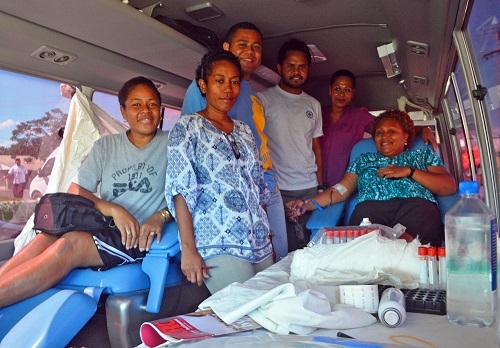Fiji’s blood bank has come a long way.
It started in the late 1950s when the management of the Colonial War Memorial Hospital, which used to depend on “emergency” blood donors, decided that a blood bank should be permanently set up in 1958.
The need for such a service emerged because the hospital had expanded. Initially, the plan was to ask donors to give one pint of blood a year.
In 1957, the CWM Hospital had a list of 216 blood donors in its register who were called in “during times of emergencies”.
This meant that these donors had to be accessible by telephone all the time and needed to have their own transport to take them to the hospital when needed.
In the early days of the hospital, there was no real need to have a blood bank.
However, this changed with the increase in the number of surgeries and the need to expand the maternity hospital to include more beds. “A major operation may require at least six pints of blood. In the initial stages, the hospital plans to use eight donors a week – for eight pints of blood,” The Fiji Times of January 20, 1958 reported.
“As the donors are being asked to supply blood only once a year, this will require a list of at least 426 donors.”
Today, a few Fiji organisations are involved in periodic blood drives to supply the country’s blood bank overseen by the Fiji National Blood Service (FNBS).
Every year, as new surgical procedures are introduced and the population grows, more blood donations are needed.
The Fiji National Blood Service (FNBS) collected 13,593 donations of blood in 2013.
By 2018, the Ministry of Health had aimed at collecting 17,500 blood donations a year.
Fiji hospitals need about 50 pints of blood every day for pregnant mothers with anaemia or bleeding, accident victims, patients with cancer, complications of diabetes and patients needing surgery to name a few.
Blood is made up of several components – red blood cells, plasma and platelets.
In the laboratory, blood is separated into these different components, under sterile conditions.
Each component can then be used to treat a patient with a different condition.
One donation can help save three lives. The FNBS aims to ensure a safe, adequate and equitable supply of blood to all who need it.
According to the World Health Organisation, the transfusion of blood and blood products helps save millions of lives each year.
“Blood can help patients suffering from life-threatening conditions live longer and with a higher quality of life, and can support complex medical procedures. Blood also has an essential, life-saving role in maternal care,” WHO notes.






